Reselling on Poshmark has come a long way. In 2025, standing out on Poshmark takes more than just good photos and competitive pricing. With thousands of active sellers listing new items daily, consistency and speed have become critical factors in boosting visibility and increasing sales.
If you’re a full-time reseller or even just flipping part-time, you know how exhausting manual tasks can be. That’s where automation tools like Poshmark bots come in, especially advanced and safe options like Posh Sidekick.
In this article, we will talk about why Poshmark Automation is the key to increasing sales on Poshmark in 2025 and how these bots are reshaping the reselling game to drive consistent sales. It’s time to get ahead and make some good $$ reselling using just the best Poshmark tool.
Why Automation is the New Normal for Poshmark Sellers
Okay, so here’s the deal: You want to increase your sales on Poshmark. But as times passes, Poshmark reselling game is getting competitive. Gone are the days when casually listing an item was enough. In 2025, Poshmark rewards:
-
Frequent closet sharing
-
Rapid engagement with likers
-
Prompt offer sending
-
Regular listing updates
-
Daily follower growth
Seems rather simple, right? But doing all this manually? It’s a full-time job on its own.
This is where Poshmark closet automation comes into play, and that’s why thousands of sellers now rely on Poshmark automation tools like Posh Sidekick to scale their businesses and boost efficiency. Not only do they save time, but the right tool can dramatically increase your exposure, engagement, and conversions.
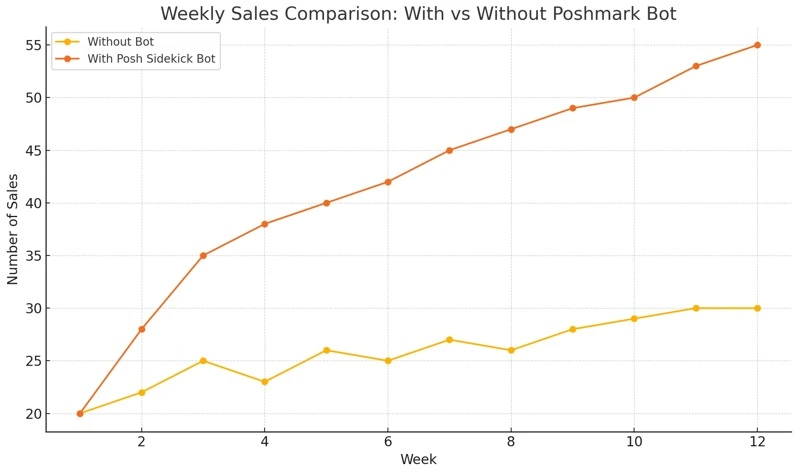
Posh Sidekick: Your Smart Reselling Assistant
Posh Sidekick is one of the most trusted and widely used bots by Poshmark resellers in 2025. Unlike risky browser extensions or glitchy desktop apps, Posh Sidekick is cloud-based, meaning it runs on its own server even when your computer is off, which is a game-changer for sales on Poshmark.
It’s built with safety, performance, and scalability in mind, perfect for sellers looking to grow smart. But to increase sales on Poshmark and make the most of this amazing Poshmark reselling tool, you need to know what it offers and how you can use it to your benefit.
How to Increase Poshmark Sales Using Posh Sidekick
So, how exactly do top resellers keep their closets thriving day after day? The secret isn’t just hard work, it’s automation done right. Posh Sidekick, one of the most trusted Poshmark bots in 2025, helps sellers boost sales by taking care of the repetitive tasks that eat up your time. From auto-sharing listings and sending offers to attracting new followers and refreshing old inventory, this smart tool works behind the scenes to keep your closet active and your items in front of more buyers.
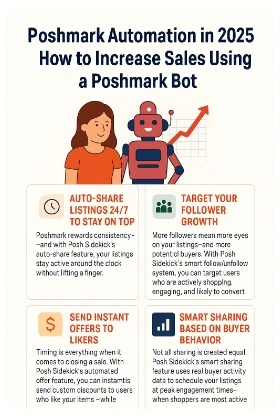
Let’s explore some ways you can use this safe automation bot for your Poshmark closet effectively and learn exactly how Posh Sidekick helps you drive more sales.
1. Auto-Share Listings 24/7 to Stay on Top
As a Poshmark seller, you know how sharing your listings is so important to get sales. If the buyer can’t see your product, how would they even come close to purchasing? Poshmark rewards consistency, and with Posh Sidekick’s auto-share feature, your listings stay active around the clock without lifting a finger.
How does it do that? By automatically sharing your closet 24/7. This powerful Poshmark sharing bot boosts visibility in search results, parties, and feeds, helping you attract more buyers and close more sales, even while you sleep.
Knowing the fact that Poshmark prioritizes recently shared listings, Posh Sidekick keeps your closet in rotation automatically so you’re always showing up in search results, party feeds, and notifications. It’s like your personal automated closet sharing tool.
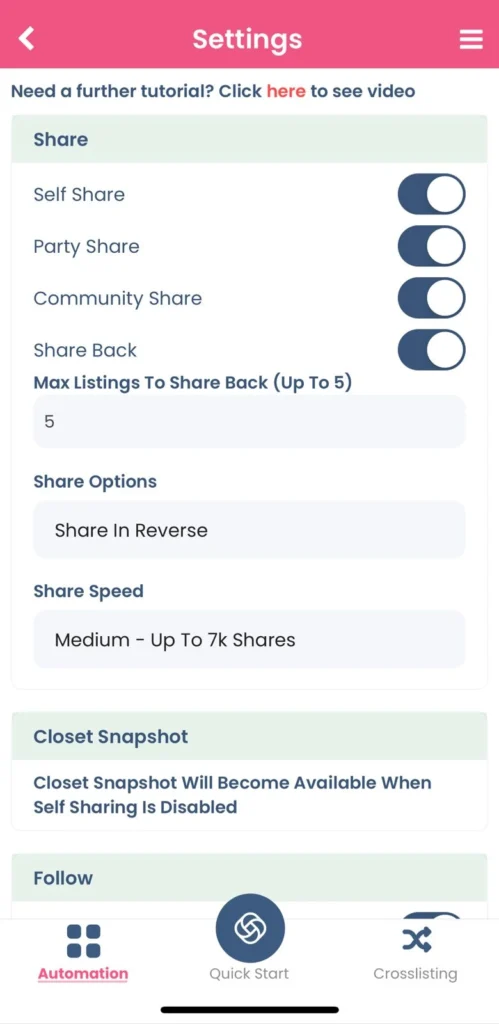
2. Get Poshmark Advertising Service
Yes, you heard that right. Advertising has entered the reselling game on our good old Poshmark.
Posh Sidekick offers a very interesting offer of a monthly subscription package that includes 30 uninterrupted days of 1000 closets promoting your listings and 7 items daily through community sharing. All of this done in a very smart, safe, and discreet way ofcourse so you don’t have to worry about seeming over the top or worse, a spam.
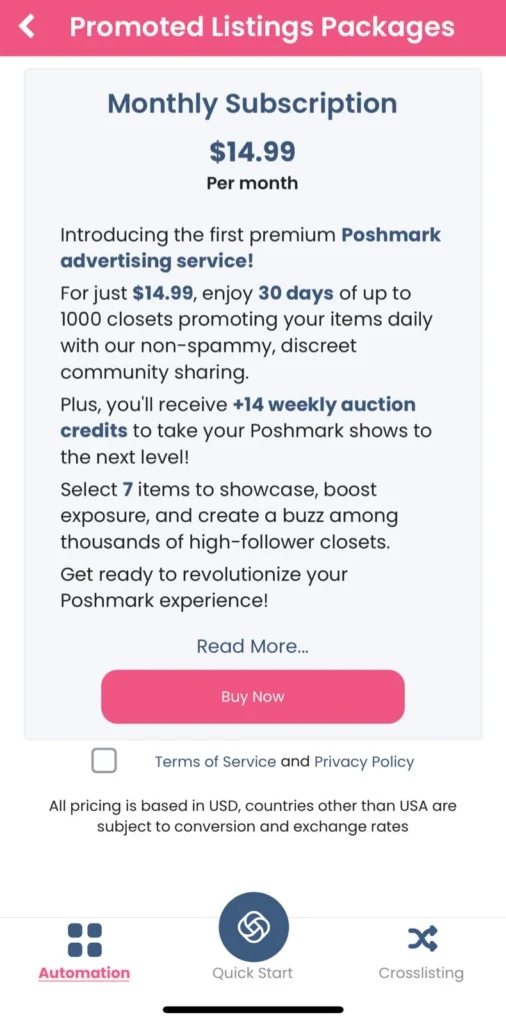
How does this boost sales? Well, with 1000 Poshmark closets showcasing your items, you’re getting the limelight and an easy sale on Poshmark for sure.
3. Target your Follower Growth
More followers mean more eyes on your listings and more potential buyers. With Posh Sidekick’s smart follow/unfollow system, you can target users who are actively shopping, engaging, and likely to convert. This Poshmark automation tool helps grow your community organically, boosting your visibility and driving traffic to your closet with minimal effort.
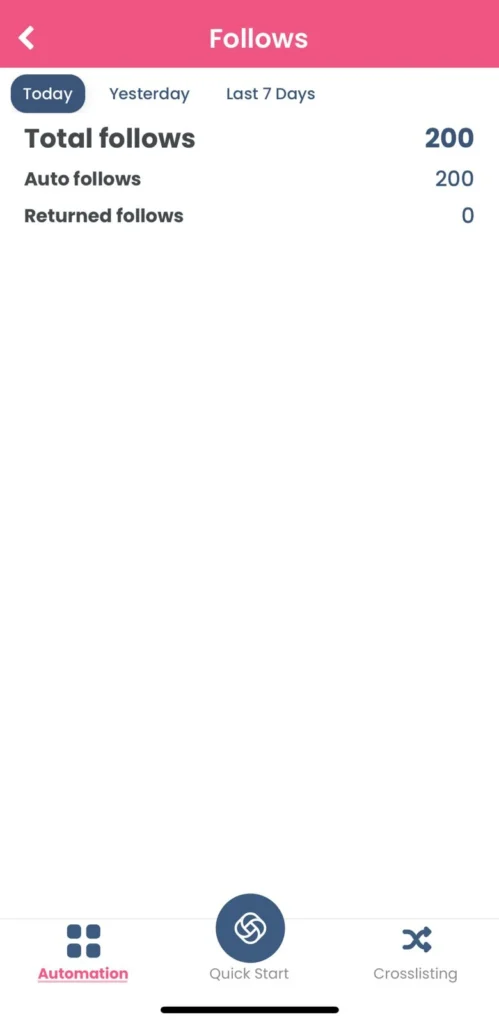
3. Send Instant Offers to Likers
Timing is everything when it comes to closing a sale. With Posh Sidekick’s automated offer feature, you can instantly send custom discounts to users who like your items, while their interest is still fresh. This smart Poshmark offer bot boosts conversion rates by turning casual likers into serious buyers, helping you close more deals with zero delay.
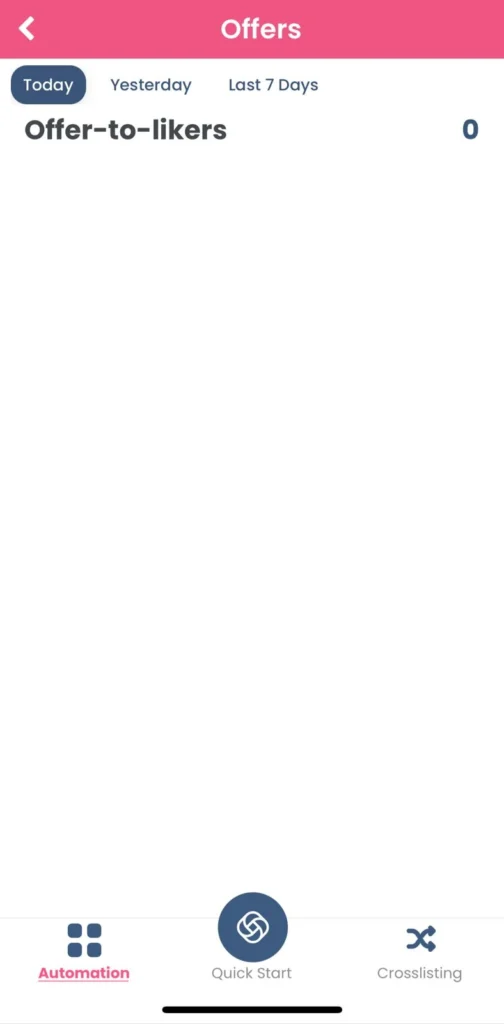
Once you’re able to show interest in your potential buyers, you’re more likely to convert them from likers into buyers without being too pushy. This will also keep your buyers engaged for longer than just one sale by making them feel special and important enough to get a custom offer. Why waste time when you can grab organic buyers with just one feature of your favourite Poshmark automation bot, right?
4. Smart Sharing Based on Buyer Behavior
Not all sharing is created equal. To make the best use of your time as a Poshmark seller, you need to know when the best, most likely time to make a definite sale is. Posh Sidekick’s smart sharing feature uses real buyer activity data to schedule your listings at peak engagement times when shoppers are most active.
This intelligent approach gives your closet maximum exposure and makes every share count, giving you a competitive edge with data-driven Poshmark automation.
With built-in insights, Sidekick lets you schedule sharing and offers during peak shopping hours, so your closet gets seen when buyers are most active. Smart timing = better sales.
5. Use AI bot for Poshmark Closet Optimisation
We all know how AI has made things easier and more efficient. So why not use it to amp up your sales on Poshmark? Posh Sidekick’s AI tools aren’t just smart, they’re built to help your listings stand out and sell faster. Here are some features that could really turn your stale, boring listing into something more desirable and attractive to buyers.
- Bulk Background Editor
Got a whole inventory to clean up? Use the bulk background remover to edit multiple listings at once, saving hours while keeping your store visually consistent and appealing.
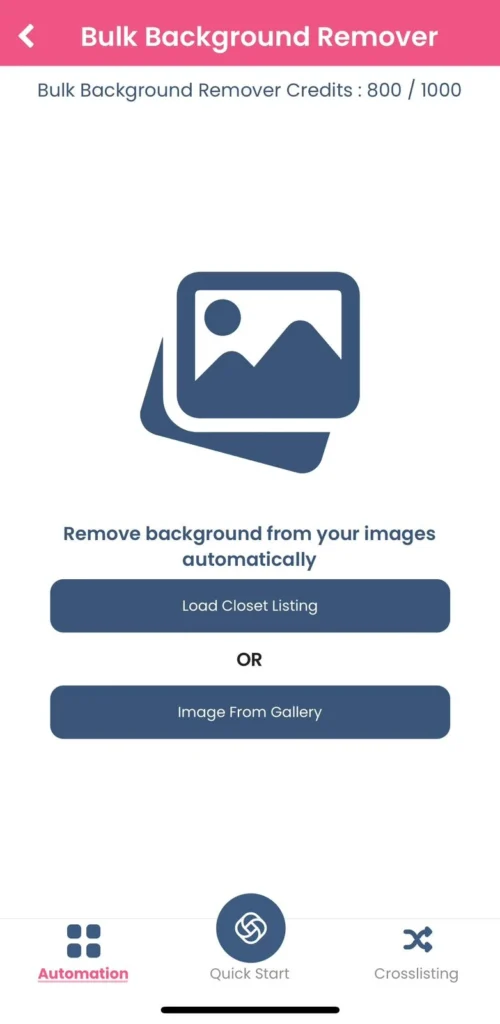
- AI-Generated Stock Photos
It’s a huge plus for buyers to be able to see how a product would look before they buy it. Strangely enough, most Poshmark bots donot have this feature. Here’s where Posh Sidekick checkmates.
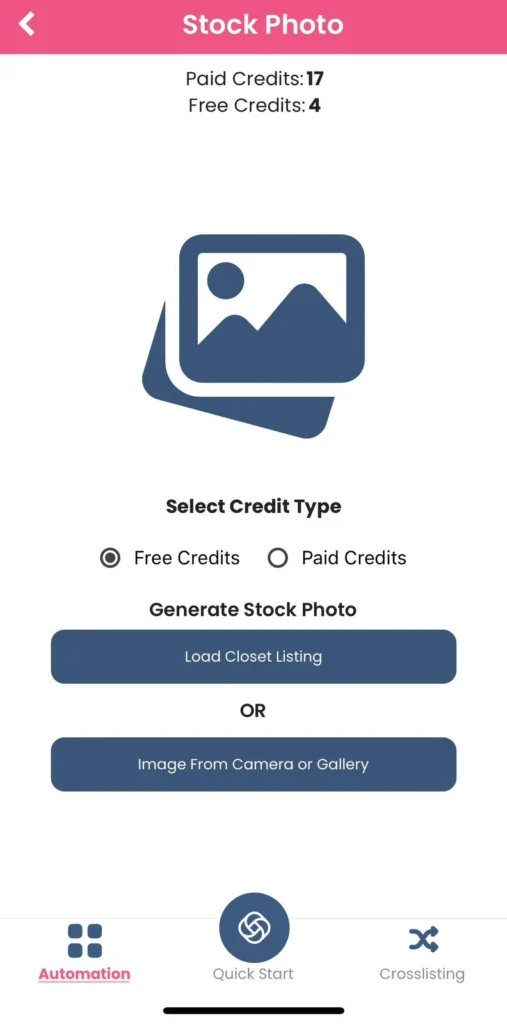
You can use the AI Stock Photo tool to create high-quality product images, model shots, or flat-lay visuals. Perfect for virtual try-ons or elevating basic product images on Poshmark without the need for real photoshoots. Easy on your bank but heavy on those much needed Poshmark sales.
- Magiscriptor for Descriptions :
With Posh Sidekick’s AI Description Writer aka the Magiscriptor, you can generate clean, compelling, and keyword-rich descriptions for your listings on Poshmark in seconds making them more appealing for buyers. Whether you’re uploading one item or an entire batch, this smart tool for resellers ensures your listings are optimized for both search visibility and buyer appeal.
It captures item details, highlights key features, and maintains a professional tone, helping you sell faster without the writing stress.
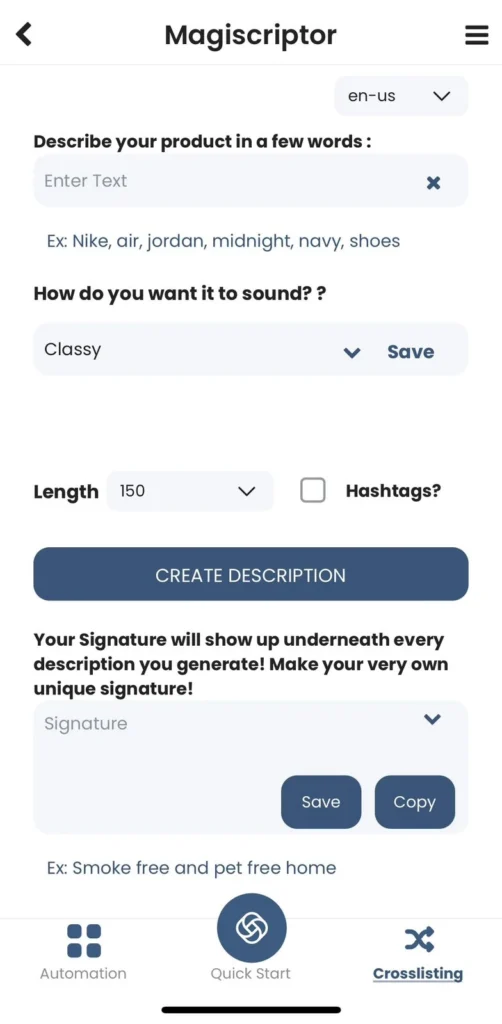
6. Track What Works with Analytics
Tired of guessing what’s actually driving sales? Well, success on Poshmark isn’t just about hustle, it’s about strategy. With Posh Sidekick’s built-in analytics dashboard, you can track what’s performing, what’s not, and when your listings get the most traction. These real-time insights help you make smarter decisions, optimize your offers, and grow your sales with confidence, all powered by intelligent Poshmark analytics tools.
Treat this as a Poshmark analytics tool to track closet performance, monitor top-performing listings, best offer times, and engagement trends. Simply, you can optimize your Poshmark closets and listings based on real data, not hunches. No more guessing what’s working!
7. Expand beyond Poshmark and Crosslist
Why limit your sales to just one platform? With Posh Sidekick’s crosslisting feature, you can easily expand your reach by listing your inventory on other top marketplaces like eBay, Mercari, and more, all in just a few clicks. This powerful crosslisting tool for resellers helps you tap into new audiences, move inventory faster, and build a multi-platform business without doubling your workload.
Do’s and Don’ts: Boosting Poshmark Sales with Posh Sidekick
| ✅ Do’s | ❌ Don’ts |
|---|---|
| Automate sharing during peak buyer hours for maximum visibility | Don’t manually share at random times—it’s inconsistent and time-wasting |
| Use the AI background remover for clean, professional product photos | Don’t upload photos with messy, distracting, or poorly lit backgrounds |
| Send instant offers to likers while interest is fresh | Don’t wait too long—delayed offers miss the sale window |
| Track your analytics to see what’s working and adjust accordingly | Don’t guess blindly—ignoring data can lead to missed opportunities |
| Relist stale inventory to bring it back to the top of search results | Don’t let older listings sit untouched—they lose visibility fast |
| Crosslist your items to platforms like eBay & Mercari | Don’t rely only on Poshmark—expand your reach for more sales |
| Use the AI description writer to create keyword-rich, polished titles | Don’t copy-paste vague or generic product descriptions |
| Follow users in your niche using smart automation | Don’t mass-follow random accounts without targeting your buyer base |
Final Verdict: Is a Poshmark Bot Worth It?
Absolutely. In the competitive world of Poshmark reselling in 2025, automation tools like Posh Sidekick are no longer a luxury; they’re a smart, scalable solution for online sellers serious about growth. By automating routine tasks, you unlock more time for strategy, branding, and sourcing, which ultimately drives more sales.
If you’re still doing everything manually, you’re not just wasting time; you’re leaving money on the table.
FREQUENTLY ASKED QUESTIONS
Q.1 Is it safe to use a Poshmark bot like Posh Sidekick in 2025?
A: Yes, if you choose the right one.
Posh Sidekick is one of the safest Poshmark bots on the market. It uses human-like timing, secure servers, and cloud-based logic to ensure your account remains in good standing. Unlike risky browser extensions or desktop apps, it’s designed to minimize any risk of suspension or shadow ban on Poshmark.
Q.2 Can I use Posh Sidekick if I’m a part-time reseller?
A: Absolutely. Posh Sidekick is perfect for both full-time and part-time resellers. It saves you hours of manual work and lets you stay competitive without being online all day.
Q.3 Will using a Poshmark bot really increase my sales?
A: Yes! By consistently sharing listings, sending timely offers, and staying active in the algorithm, sellers using Posh Sidekick typically see an increase in visibility, engagement, and conversion rates.
Q.4 Can I customize when and how Posh Sidekick shares my listings on Poshmark?
A: For sure! Posh Sidekick allows full customization of your sharing schedule. You can set it to share during high-traffic hours, prioritize specific listings, and adjust frequencies to match your selling strategy.











